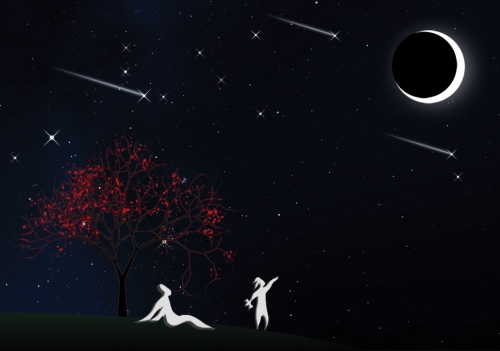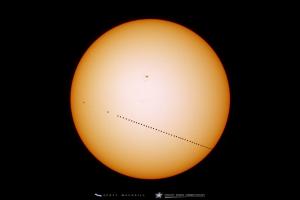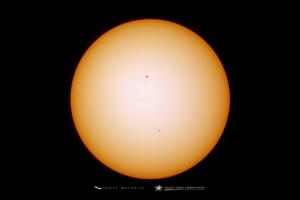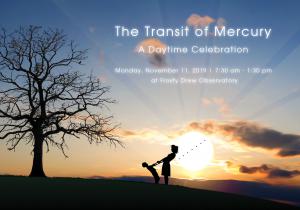
Stargazing Nights
- Where:
- Frosty Drew Observatory
- When:
- Fri, Nov 8, 2019 7:00 pm - 10:00 pm
- Cost:
- $5 Suggested Donation per person 5 years and older
Tonight is Stargazing Night at Frosty Drew Observatory and forecasts are calling for clear skies and cold temps all night long. In the sky, the 86% waxing gibbous Moon will rock our night, with fabulous views of Copernicus Crater, Plato Crater, Tycho Crater, and other stunning features on the lunar surface. Winds will be a bit high, with gusts reaching into the 20 mph range. Though not too intense, these winds could restrict our views to one side of the sky. The takeaway tonight will be the cold temps, which will drop into the low 20’s overnight. Our first real taste of winter for the 2019/2020 season!
We will open the Observatory, Sky Theatre, and Science Center at 7:00 pm tonight. In the Observatory, the primary telescope will start off with a late season view of Saturn, briefly. After which, we will direct the big telescope toward the gibbous Moon and showcase numerous craters along the lunar terminator (the area where the sunlit regions and the night regions meet). If winds are acceptable, we will also check out binary stars Albireo, Mesarthim, 32 Eridanus, and Zeta Pisces. Uranus and Neptune are also on our target list, with potential views of Uranus’ moons if viewing conditions are optimal. In the Sky Theatre temps will be warmer and on screen we’ll be showing images of celestial objects previously captured at Frosty Drew Observatory. In the Science Center, the works of Frosty Drew Observatory astronomers will be on gallery. We’ll stay open until 10:00 pm.
Overall, tonight is another excellent night to be out! We do have a bright gibbous Moon, but at 86%, all the best features on the Moon are in excellent viewing, so it is the night to observe the Moon. We’ll also have quite cold temps tonight, with wind chills staying in the 20’s all night. So dressing properly will be a requirement for all who visit. You can read up on how we dress for the long cold of New England wintertime astronomy at: https://frostydrew.org/publications.dc/show/entry-884/. If you show up inadequately dressed, it will be a rather dreadful night because the observatory building is not heated and everything inside the observatory needs to match the outside air temperature, which is cold. Regardless, tonight is a fantastic night. So dig out your winter time garb and head out for a night of the Moon, planets and stars, and kick off your 3-day weekend with a bit of celestial awesomeness at Frosty Drew Observatory.
---------------------------
Weekly Happenings
Scott MacNeill
The second big celestial event of 2019, the first being the fabulous Total Lunar Eclipse that occurred on January 20th (https://frostydrew.org/media_galleries.dc/show/entry-1090/), is upon us! The Transit of Mercury will happen this Monday, November 11, 2019. Which is part of the 3-day weekend that starts tonight as we celebrate Veterans Day. The Transit of Mercury happens when Mercury orbits in between Earth and the Sun (inferior conjunction) as well as crosses its ascending or descending node (crosses the plane of the Solar System, or Ecliptic), in this case it is the ascending node. What all of that geek means is that Earth-bound viewers will be able to witness Mercury crossing the visible area of the Sun. At this time, weather forecasts for Monday are looking rather promising, and have improved from earlier forecasts. Since this event is happening during the late morning and early afternoon hours (EST), we should have mostly sunny skies for most of the event. The transit itself will play out over Frosty Drew Observatory, and largely New England, as follows:
Starting at 7:39 am EST, first contact will occur. This is when Mercury will make its first appearance on the western edge of the Sun.
At 7:41 am EST, second contact will occur. This is when the entire disk of Mercury has entered the view of the solar disk. This is the first opportunity to catch a view of the “black drop effect”
At 10:23 am EST, greatest transit will occur. This is when Mercury will be at the center-most point of the Sun for the transit.
At 1:06 pm EST, third contact will occur. At this time, Mercury will start to depart the eastern side of the solar disk. This is the second opportunity to catch the “black drop effect”.
At 1:07 pm EST, forth contact will occur. At this time, Mercury will exit the solar disk, effectively ending the transit event.
These times set up Frosty Drew Observatory for a fabulous view of the entire transit event.
Observing the Transit of Mercury is not as easy as observing an eclipse. Mercury is quite a small planet and it is quite close to the Sun. Which will make it difficult to view without, at least, a binocular level of magnification. Considering that you will have to look directly at the Sun to see the transit event, the same dangers of looking at the Sun exist, and the same precautionary measures involved are absolutely required! Eclipse Glasses will give you a safe view of the Sun, though you may not be able to make out Mercury in the view, if so, it will be very small. You will not be able to magnify the view of Eclipse Glasses safely, so don’t even try. If you are using binoculars or a telescope to observe, be sure you are using an aperture-end solar filter (a filter that is attached to the large side of the binoculars or telescope, not over the eyepiece or ocular) that is designed and approved for direct solar observation. Additionally, the filter must firmly attach to the device to prevent wind from blowing it off. Observing the Sun without adequate filtering will result in permanent blindness! Alternatively, you could just visit Frosty Drew Observatory, where we will have a telescope setup with a Type II White Light filter, and a telescope setup with a Hydrogen Alpha filter, both available for visitors to directly observe a magnified view of the transit. We will also have solar projectors setup, which will project a magnified view of the transit onto a piece of paper. Additionally, we will have a telescope fitted with a white light filter and a camera, which will broadcast live magnified views of the transit onto screens all around our campus. This will offer you numerous safe viewing methods, as well as a day out with like minded individuals, enjoying a spectacular natural event. If you have cloudy skies, or cannot make it to an observatory and don’t want to risk your vision, there are numerous online resources available to observe the transit. Here are some:
Frosty Drew Observatory always shows the most recent view of the Sun from the Solar Dynamics Observatory.
The Virtual Telescope will broadcast live views of the transit.
Regardless of how you watch the Transit of Mercury, it is a fascinating event that only happens every so many years, with the next occurrence, visible over New England, happening in May 2049. So either throw up the transit on the corner of your screen or stop in at Frosty Drew Observatory for a fabulous daytime celebration with the Sun and Mercury.
-Scott
Check out our page on Visiting Frosty Drew Observatory to learn more about what to expect at the Observatory and better help you prepare for your visit.
Please note that we do not allow any white lights on our campus from dusk - dawn. This is to ensure an equally awesome view of the night sky for all and to allow for the use of light sensitive astronomical equipment. Learn more about why we have this requirement in The Red Light District
To allow for visitors to freely explore all of the amazing experiences at Frosty Drew Observatory without having to wait in long lines, we have integrated a pass-based group access process that applies to only the large telescope inside the observatory dome. Take a moment to familiarize yourself with this process as part of your planning steps.




